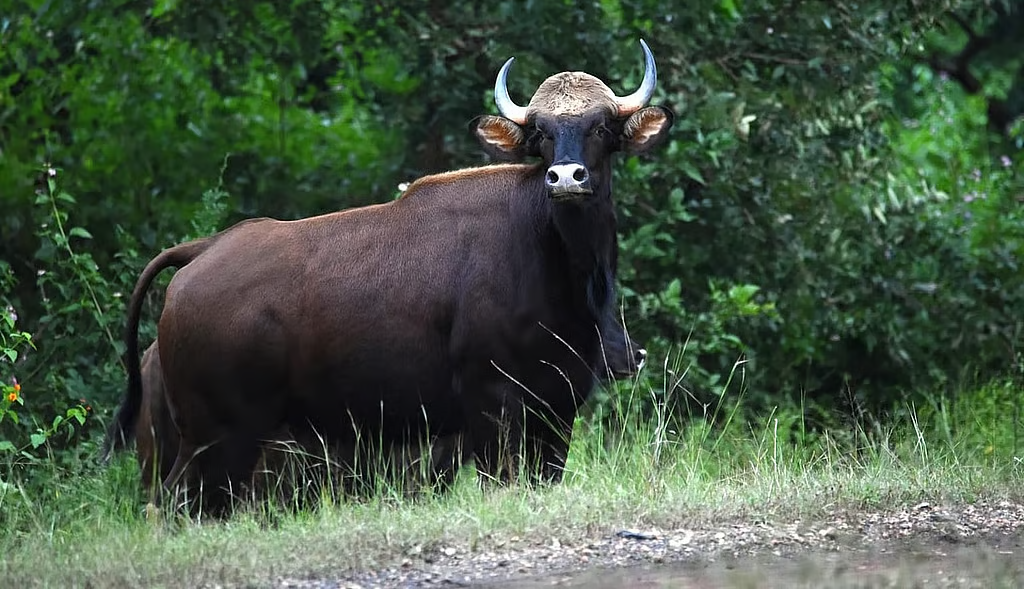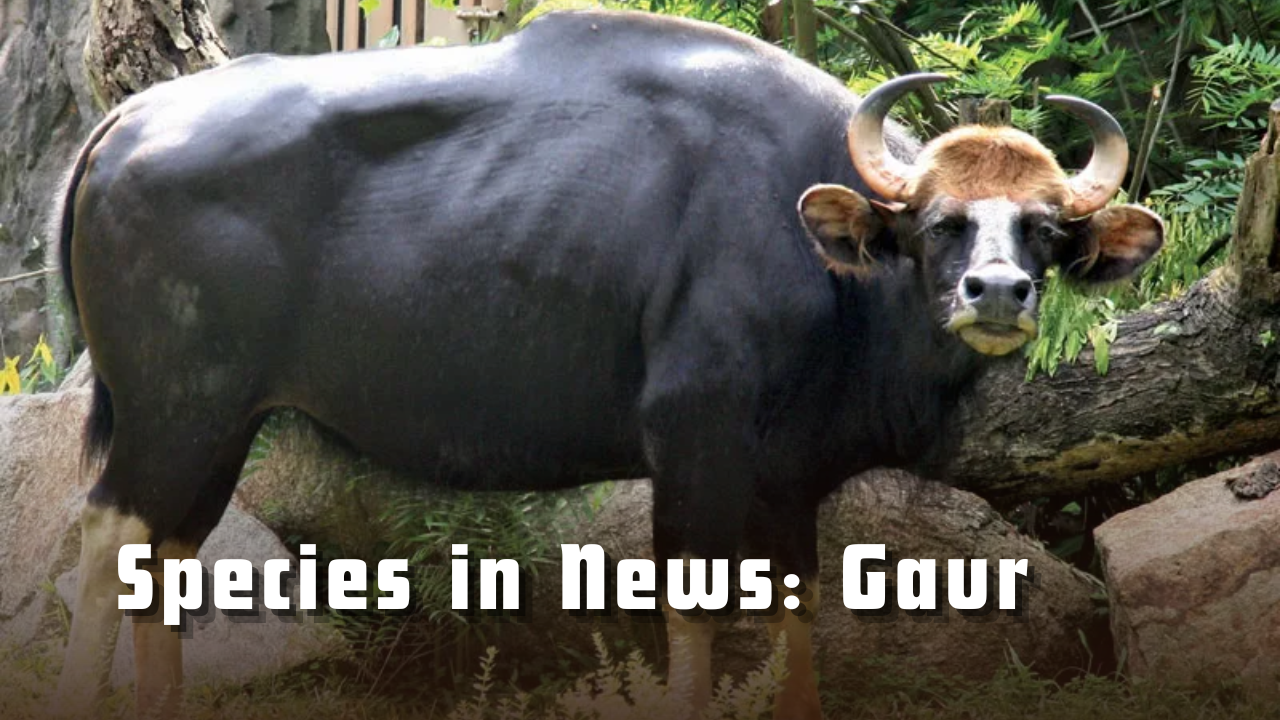Font size:
Print
Species in News: Gaur
Gaur declining in Palamau Tiger Reserve, its last stronghold in Jharkhand
Context: Palamau Tiger Reserve, the last refuge of Gaur in Jharkhand, has seen its population drop from 150 in the 1970s to just 68, raising serious conservation concerns. The decline threatens ecological balance and the prey base for tigers in the region.

About
- The Gaur is the largest extant wild bovine and one of the most powerful land mammals. It plays a crucial role in forest ecosystems as a herbivore, seed disperser, and prey species for apex predators like tigers and leopards.
-
Conservation status:
-
- IUCN Status: Vulnerable (population decreasing)
- CITES Status: Appendix I (trade prohibited except under exceptional circumstances)
- Schedule of Wildlife Protection Act (WPA), 1972: Schedule I (highest legal protection in India)
-
Traits:
-
- Scientific name: Bos gaurus
- Diet: Herbivore (grazing and browsing)
- Habitat: Evergreen forests, deciduous forests, grasslands
- Physical Traits: Massive build, dark brown coat, distinctive white “stockings” on legs, large curved horns
- Social Structure: Typically seen in herds with a female-biased sex ratio, but few juveniles are observed in declining populations
Where is it found?
- India: Western Ghats (Karnataka, Kerala, Tamil Nadu), Central India (Madhya Pradesh, Chhattisgarh), Eastern India (Odisha, Jharkhand)
- Jharkhand: Historically in Saranda, Dalma, Hazaribagh, and Gumla; now mostly confined to Palamau Tiger Reserve (PTR)
- Also found in Nepal, Bhutan, and parts of Southeast Asia.
Subscribe to our Youtube Channel for more Valuable Content – TheStudyias
Download the App to Subscribe to our Courses – Thestudyias
The Source’s Authority and Ownership of the Article is Claimed By THE STUDY IAS BY MANIKANT SINGH





